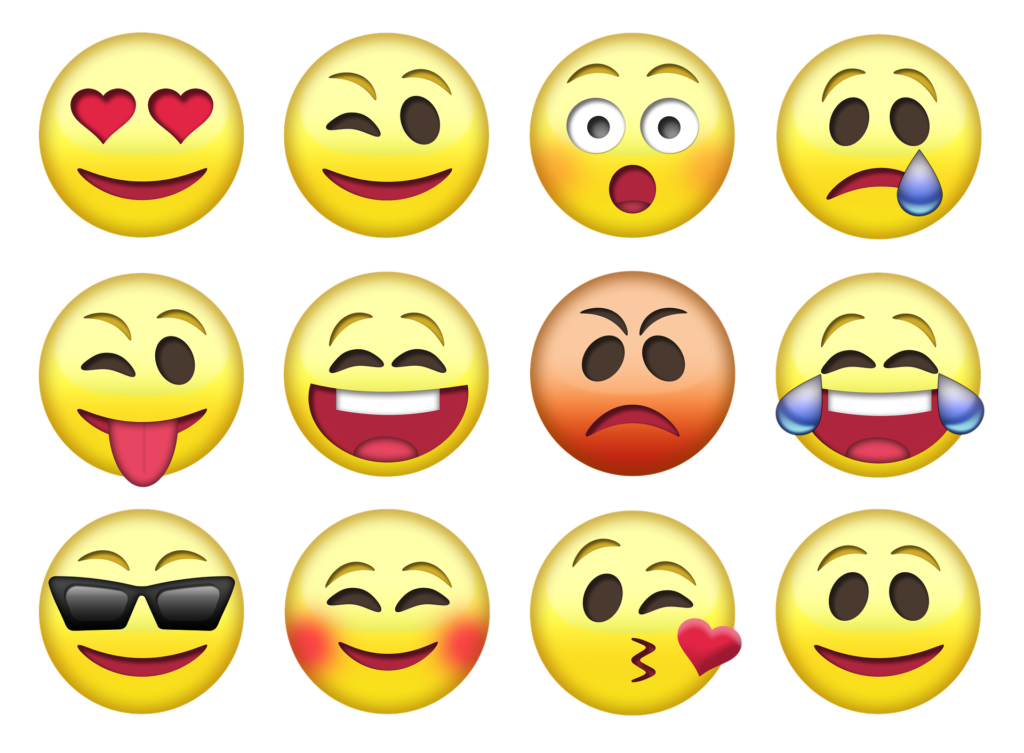
From Emjoi's to Emoticons- What's the Difference
We all communicate in different manners, and it is an ever changing with all of the new technology out there, and with the break out of the emoticons and emoji’s it is now advancing to a new level. With the idea that an image is worth a thousand words, we can now transition from toneless messages and avoid mis-interpretation when emailing co-workers and clients.
Young adults and teenagers might not ever know how it was without the emoticons because they have been with them all along, so it is a normal thing for them to use emojis in messages. But for the older generation, we had to endure years of not knowing what the sender was trying to say or the tone they were depicting. But what transpires when they are in the position of a professional career and have to adhere to business communication rules? Do they have to leave their emotions behind? What is acceptable and what is too much?

Business communication is different than messaging a friend, your clients expect a level of professionalism with communication. Expectations such as grammar, and accurate punctuation are just a given when in communication via email, inter-office memo or internal messaging systems, there are certain levels of competence expected.
Here is a full list of emoji’s you can use just copy and paste no app needed or copy paste this address in your web browser. http://getemoji.com
“The biggest problem with all electronic communication is that it’s toneless. In the absence of tone, people read negative tone into it.” The Atlantic
Language barriers are everywhere, but emoji seem to break that barrier with an emotion attached to the message when normal email or messaging communication can fail because no one can predict the tone of the message, now with a smiley face at the end of the message you have a complete understanding of the message that is portrayed.
Now we can eliminate the guessing game “name the tone” of the message, unlike when you are face to face, you can effectively read body language. So what is acceptable, there are different levels that you can use your head about when sending a message. There aren’t any straightforward rules, but here are a few guidelines if you aren’t sure.
- If it is a close friend you work with or someone you hang out with after work, then yes emoji are fine – just keep it between the two of you, don’t make it an inter-office message.
- Your communication with your boss depends on your relationship, and if you two are lax together or strictly talk to each other only at work only when you have to.
- Your other co-workers, just depends on their attitude and your relationship with each of them, but it’s for you to determine. If they aren’t in your circle, then probably not a great idea to start with until they get more comfortable with your personality.
- Your customers I would say depends on if they are a new prospect or client then keep it professional until you get to know their personality, but current customers that you have a business relationship with would be fine. I have customers that we hang out outside of work and we use emoji’s all the time.
- Formal communications I stay formal and keep the J out of the conversation they is always a time and place for them and this isn’t one.
Not all emoticons have an appropriate place in business; you don’t want to use most of them, but a thumbs up or smiley face occasionally doesn’t hurt if the mood calls for it. In my field of work in marketing and social media, I use them more than let’s say lawyers, can you imagine a message from a lawyer that looks like this, “great job today? (happy smiley) way to go? (clap hands). Let me know what you are doing with your other cases. (ok) bye? (thumbs up), That just doesn’t fit the expertise of the professions they are in, so it is up to you to make a smart projection on when the occasion calls to use emoticons or leave them for another day.
Happy Marketing!